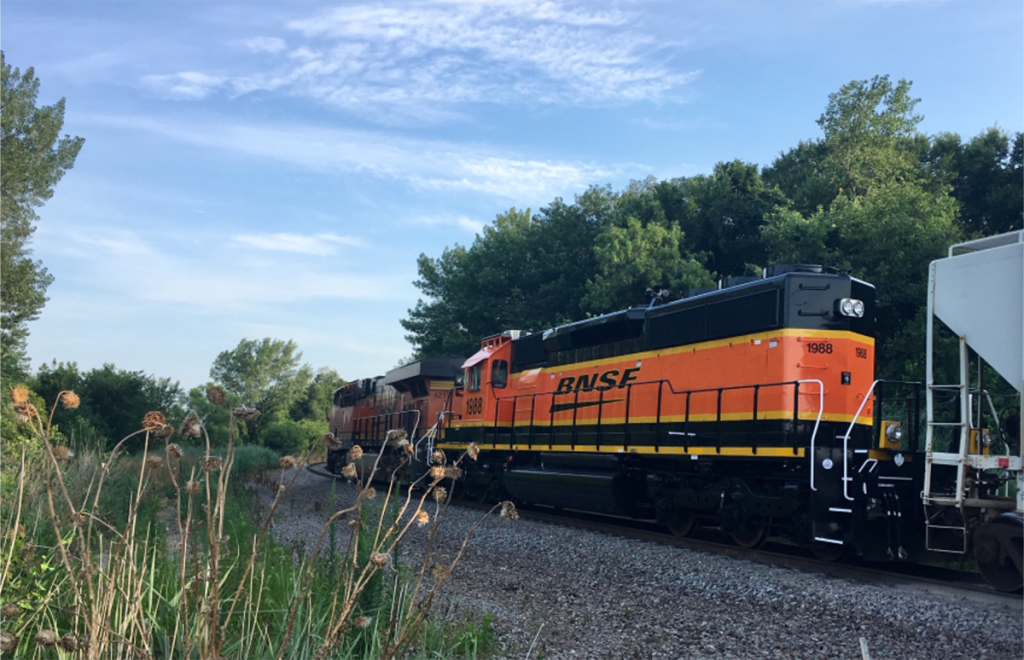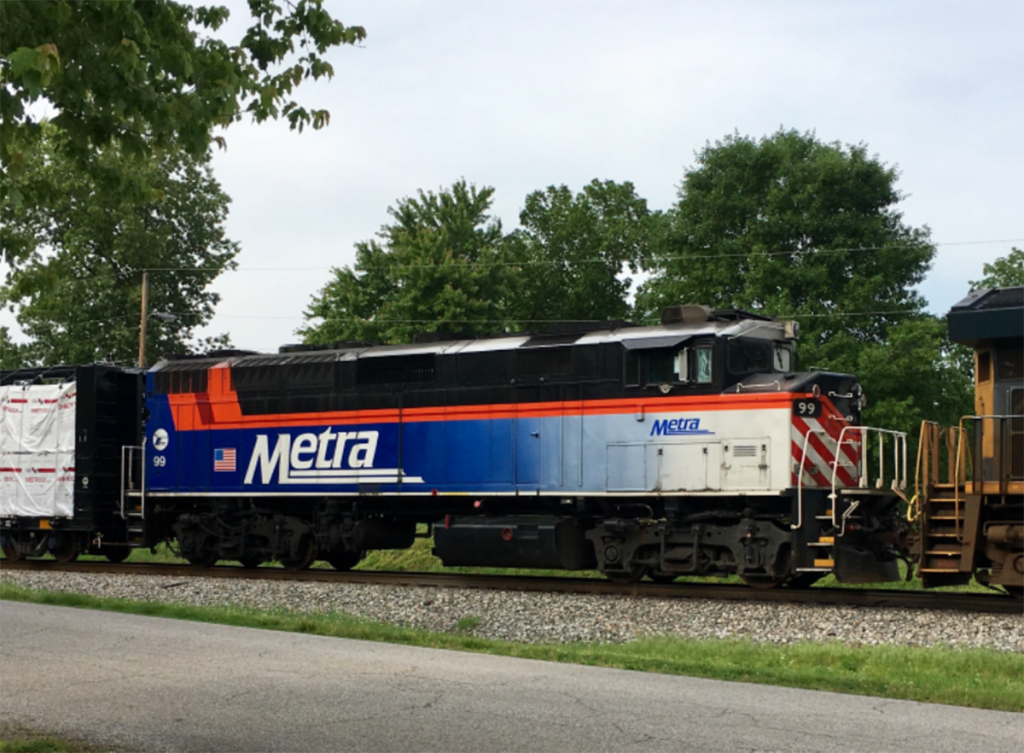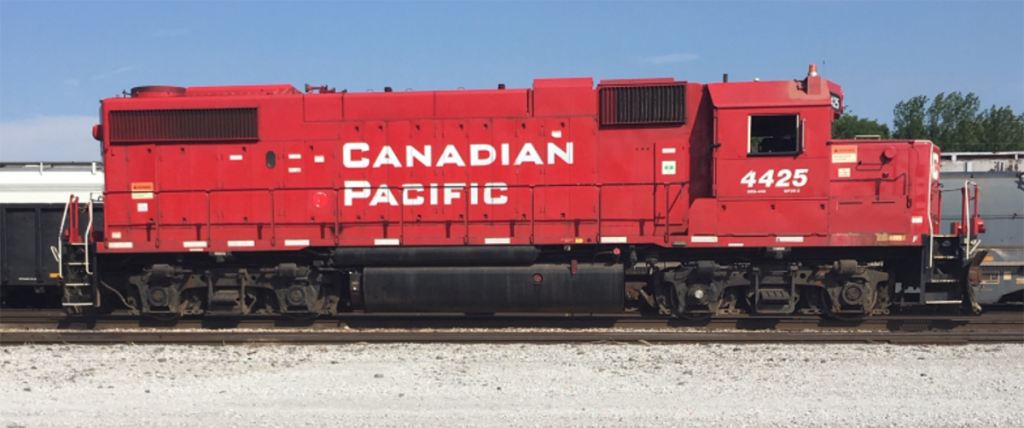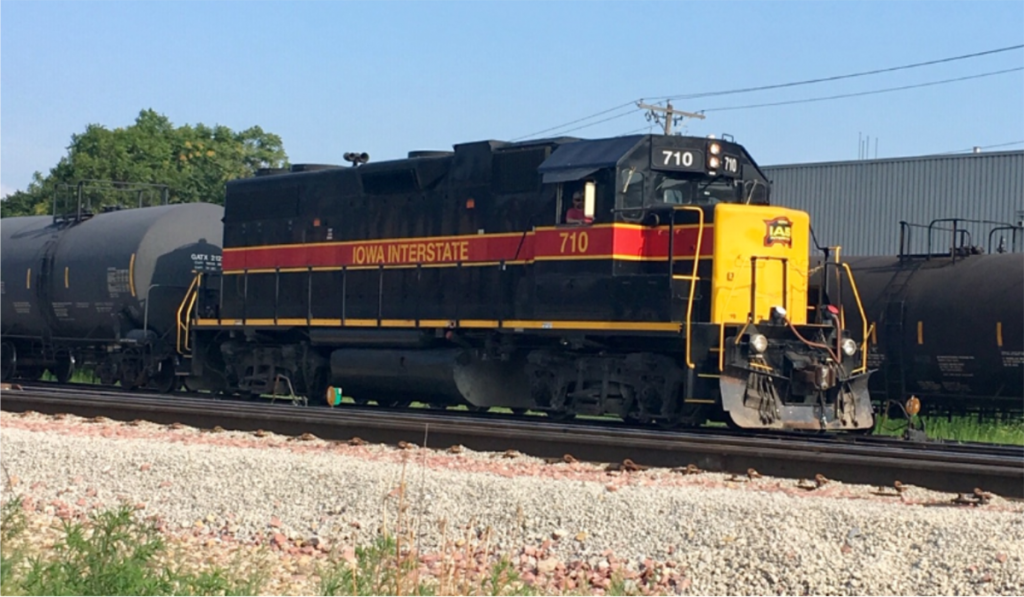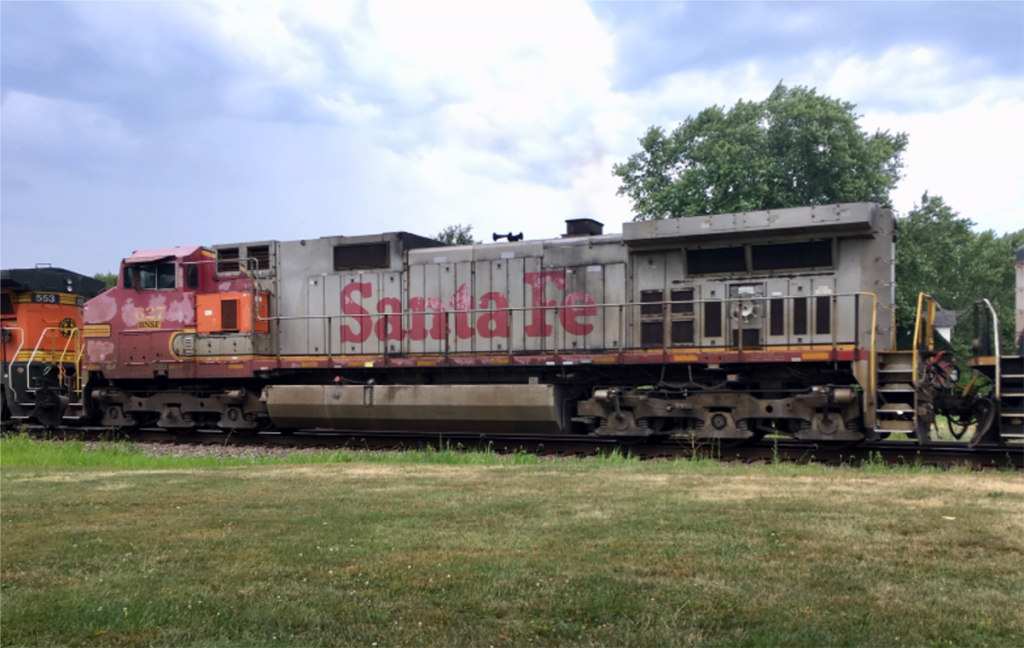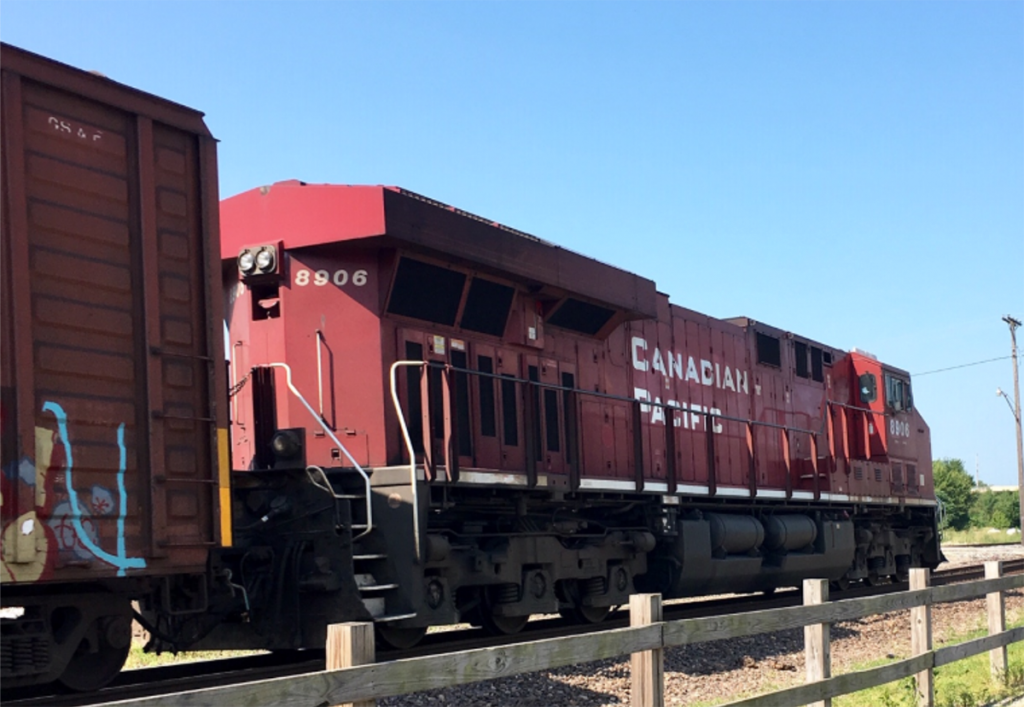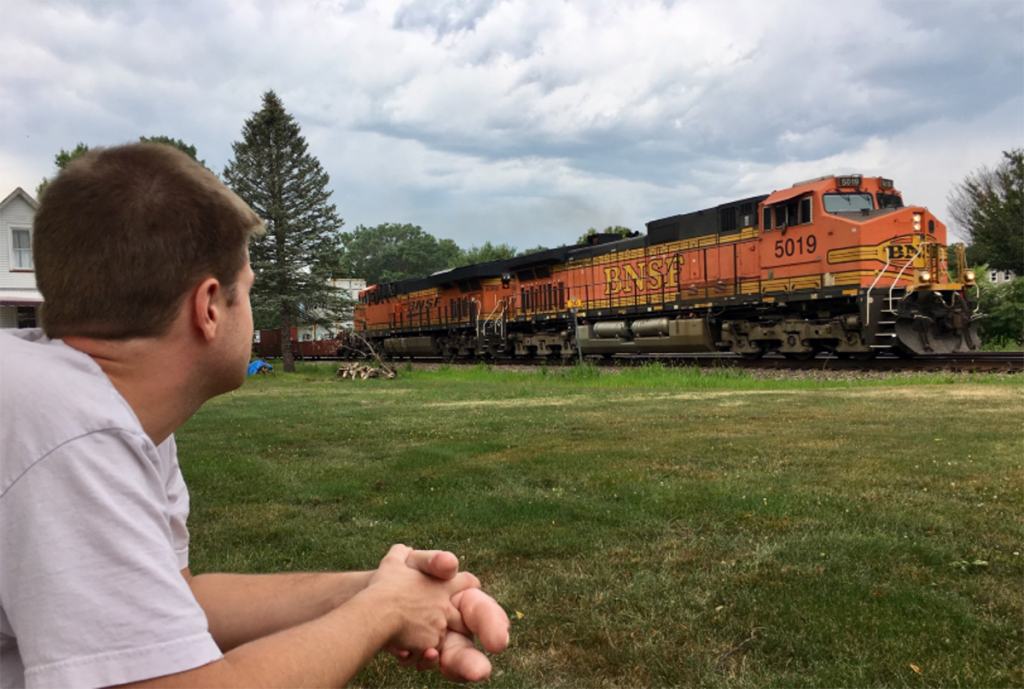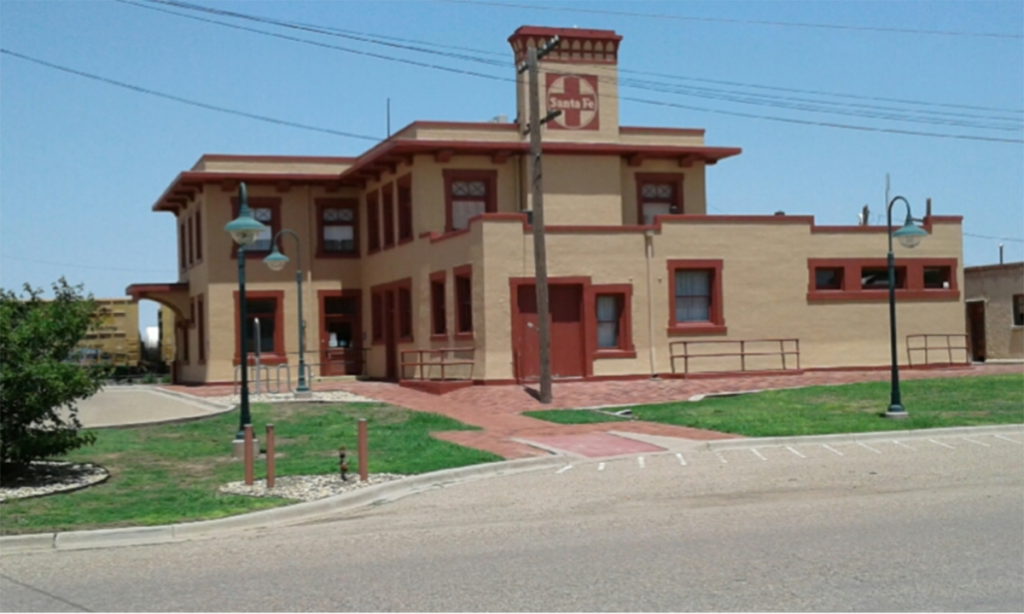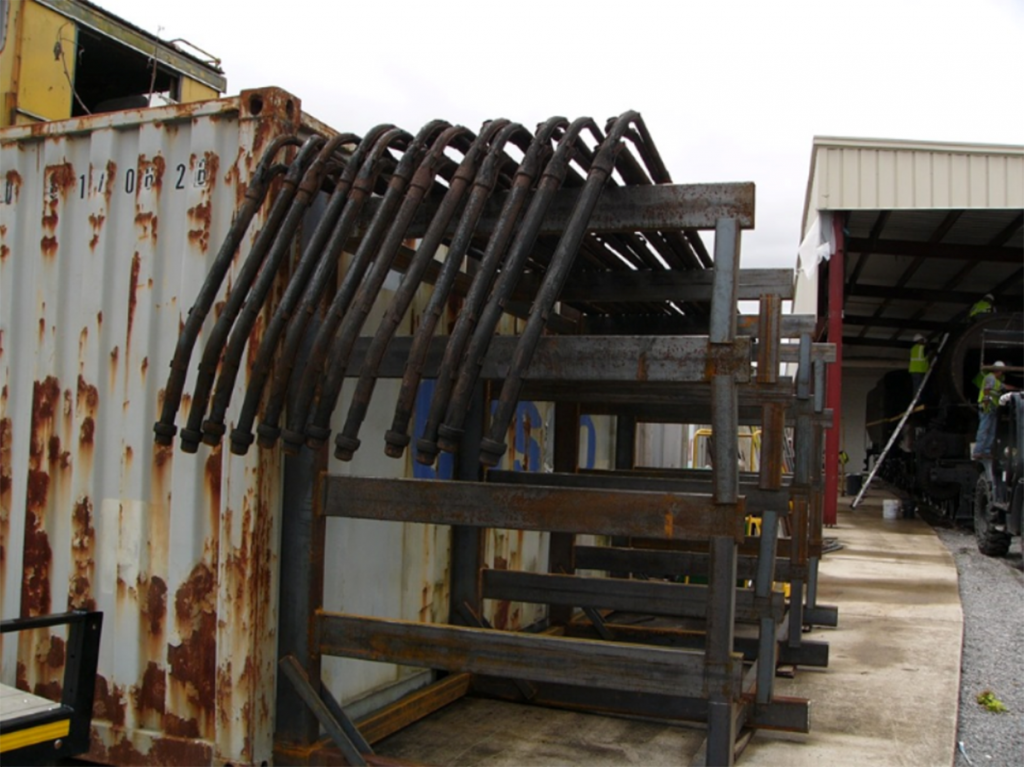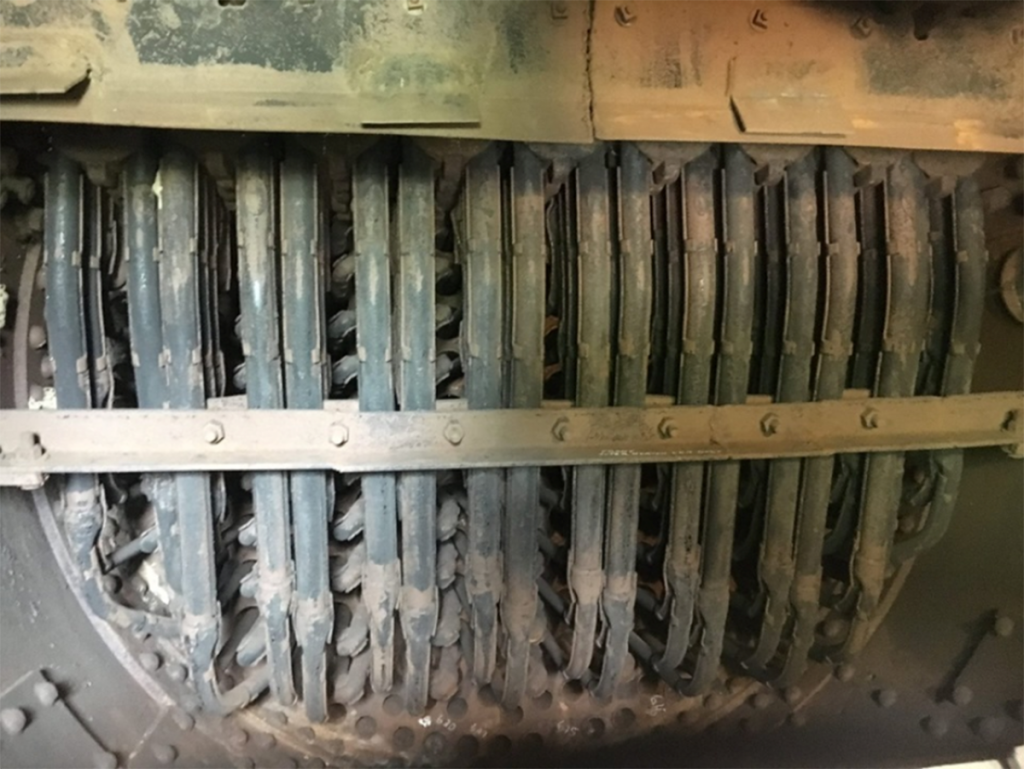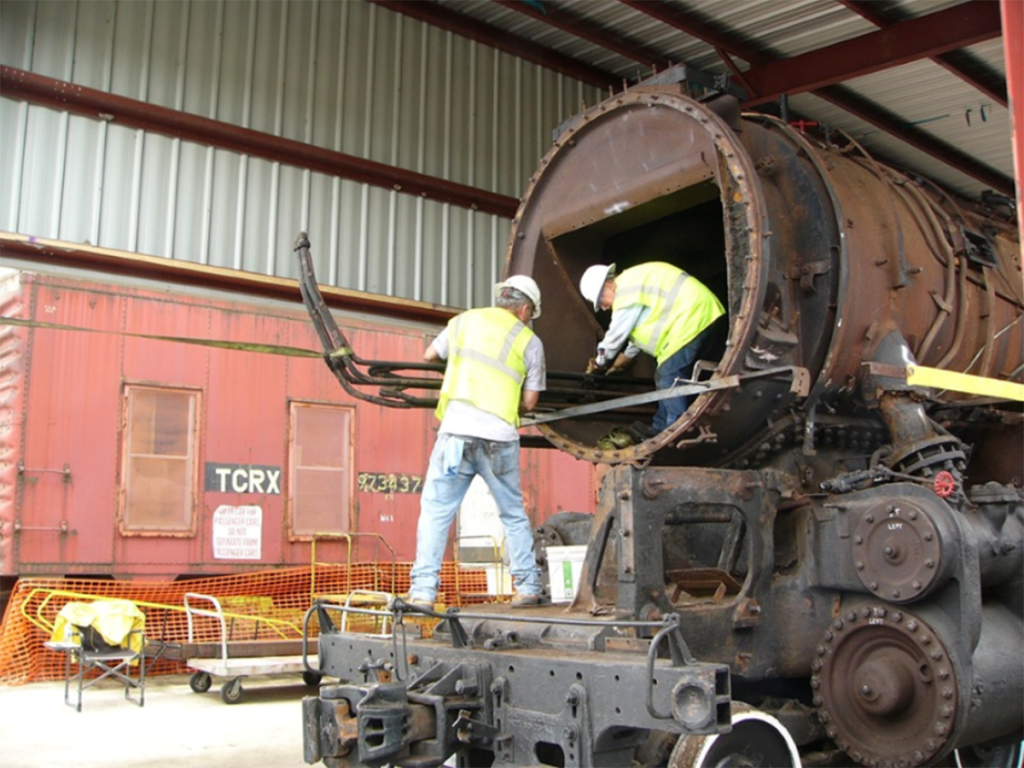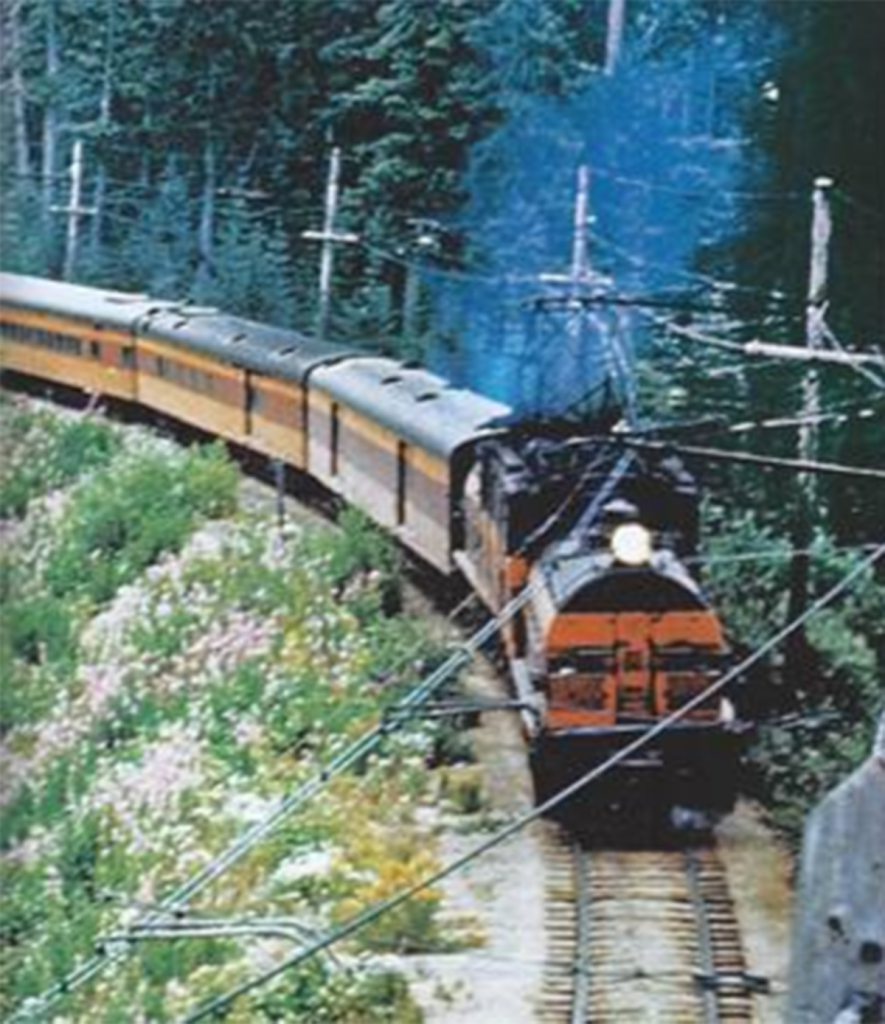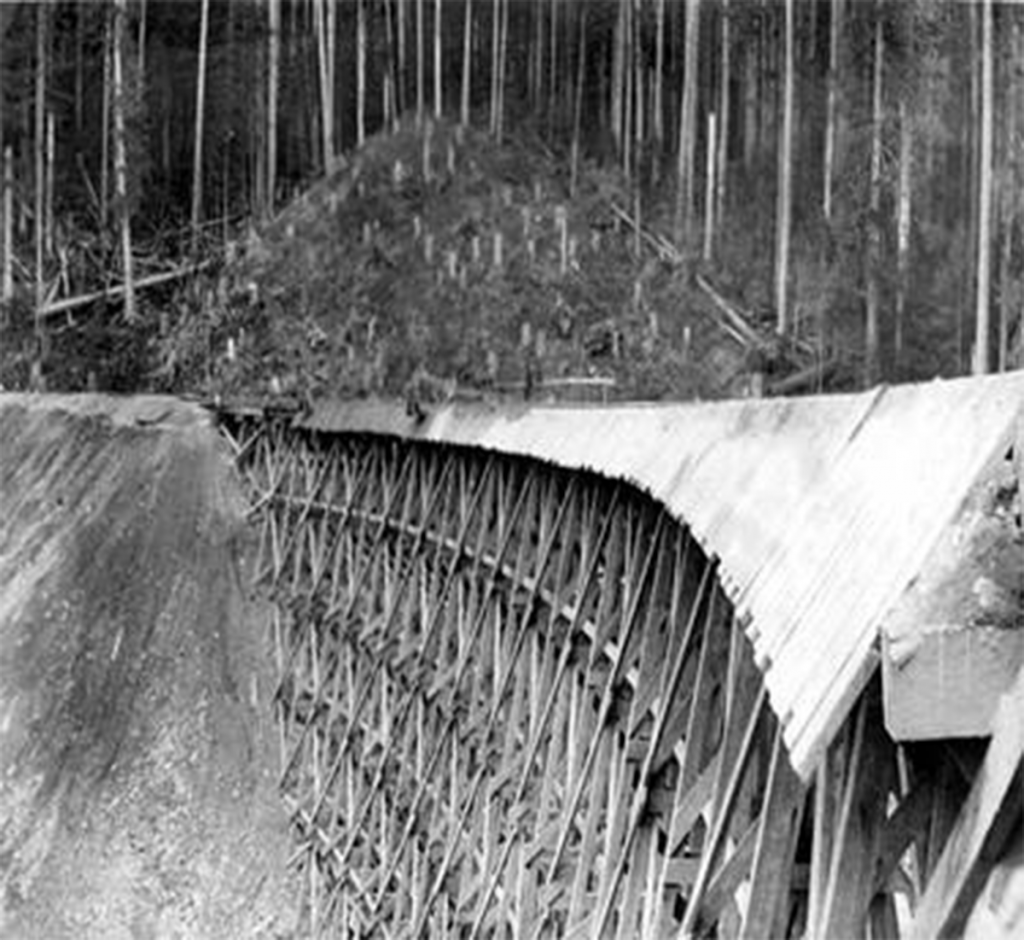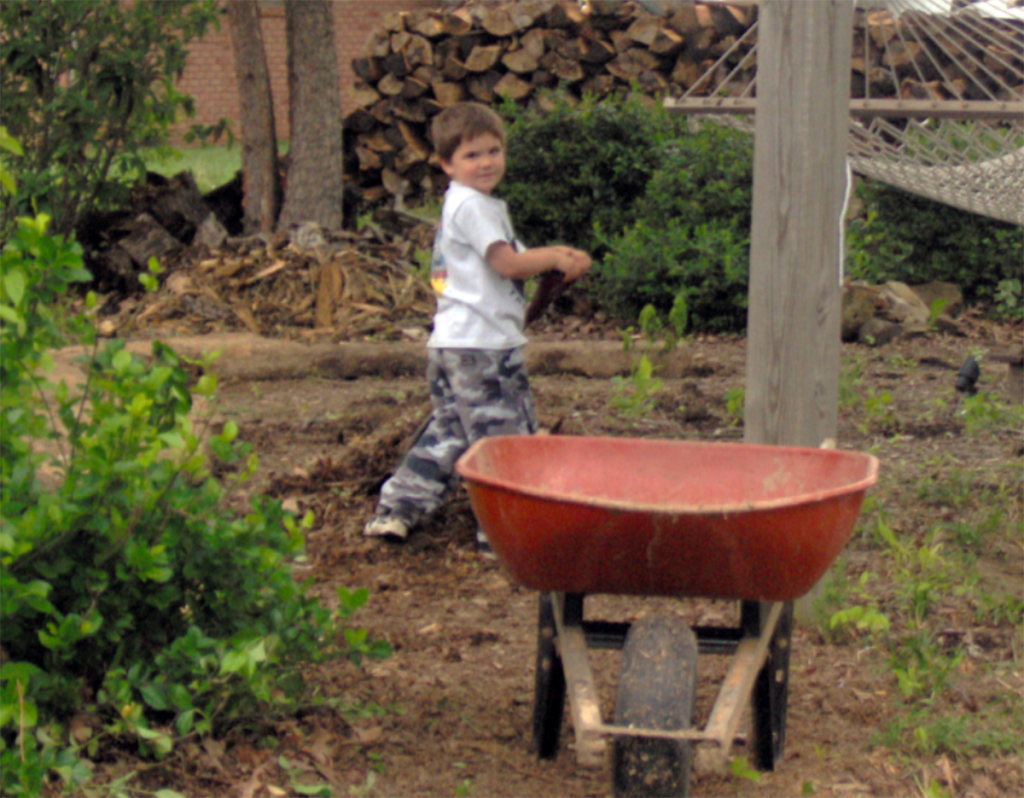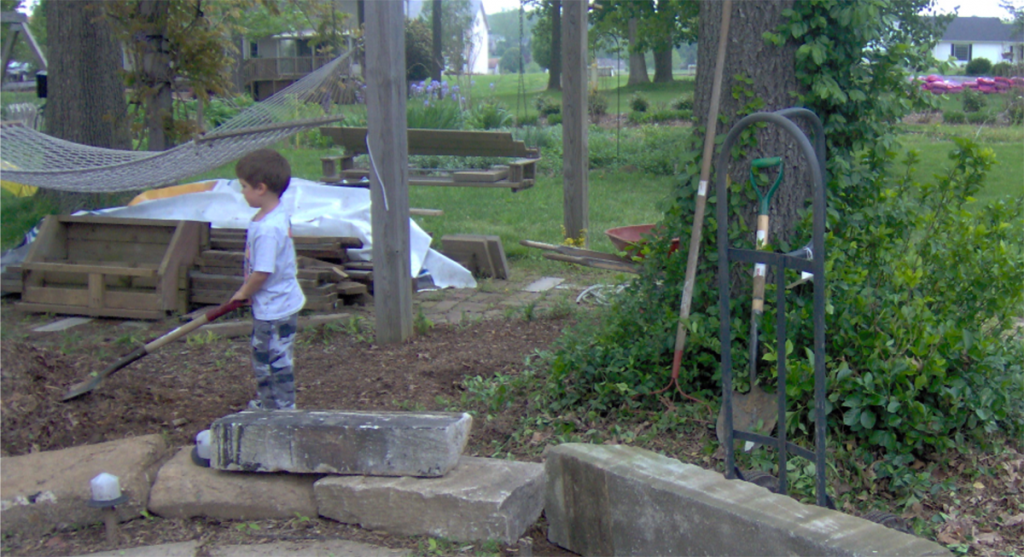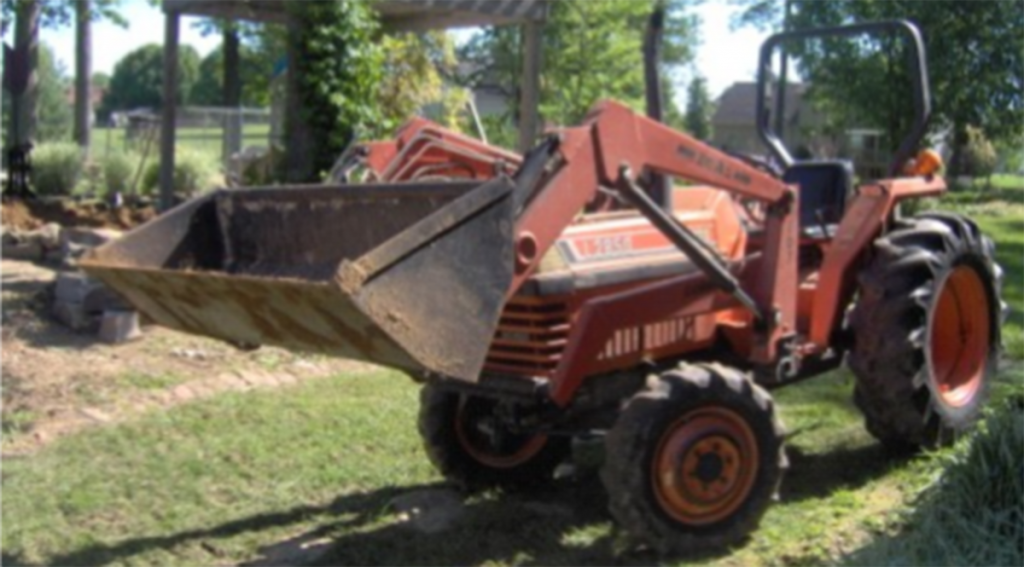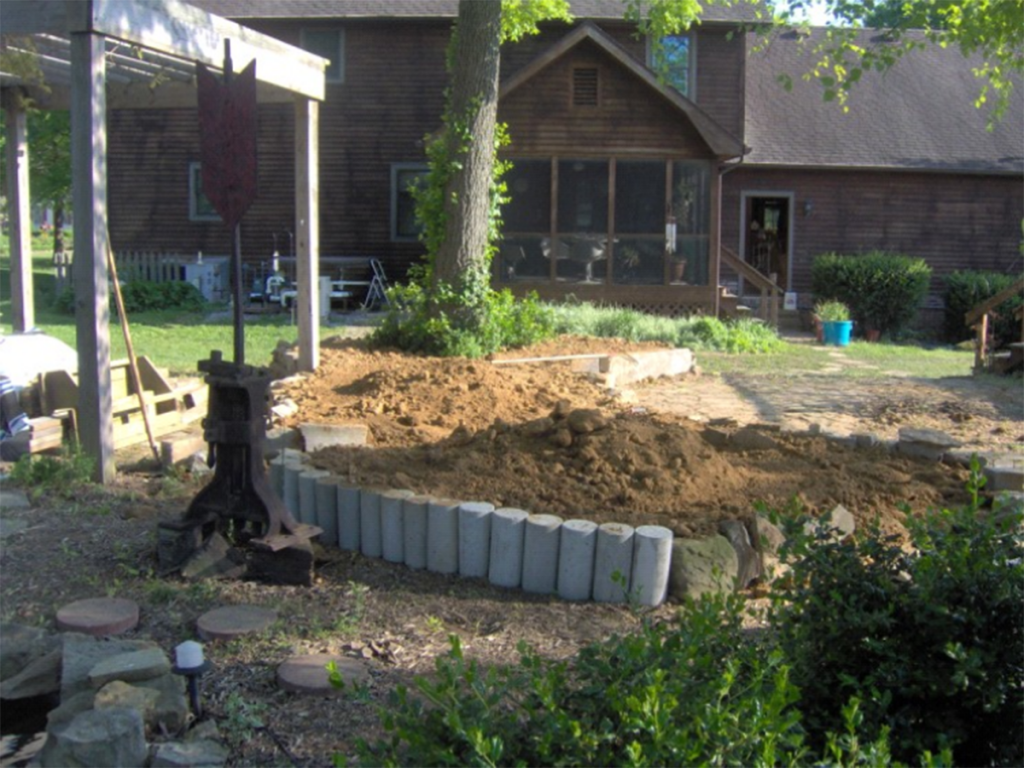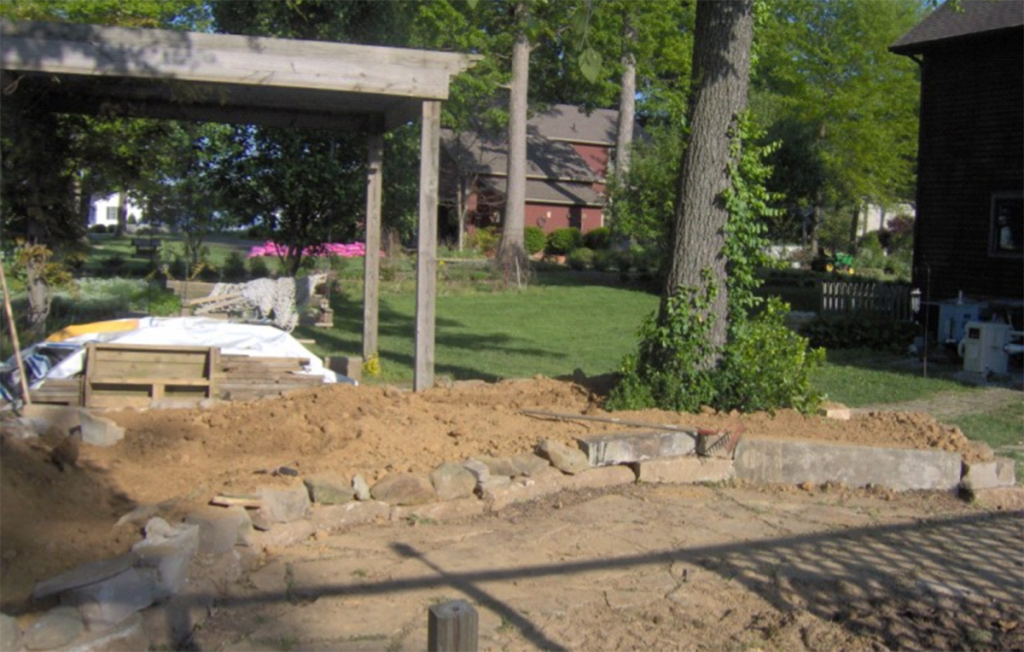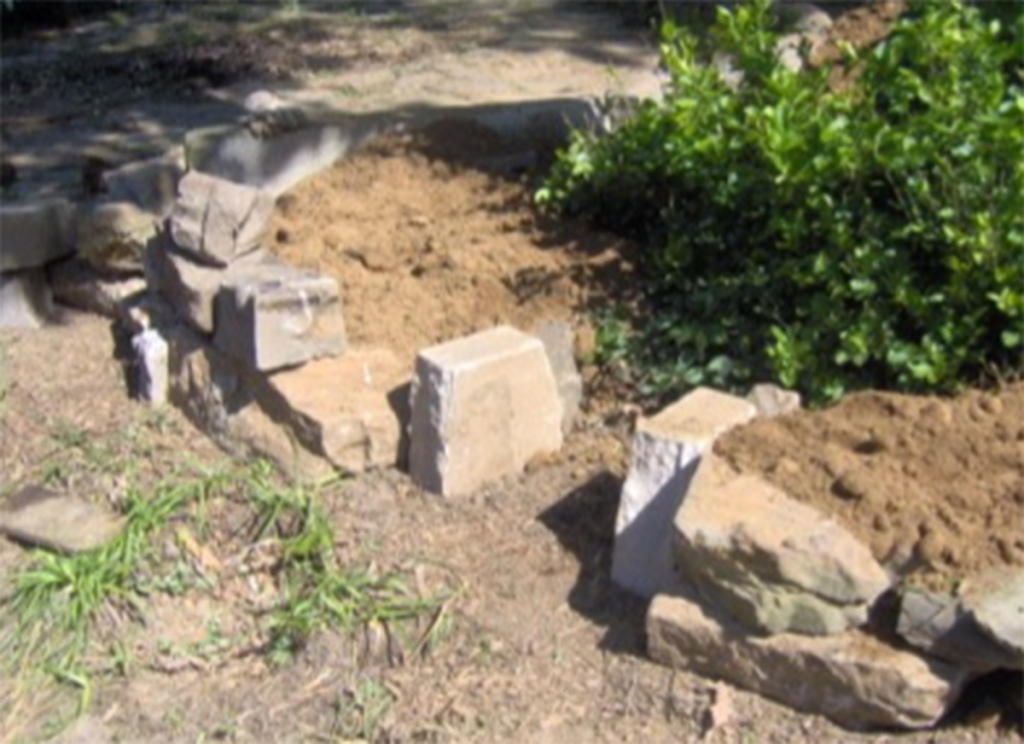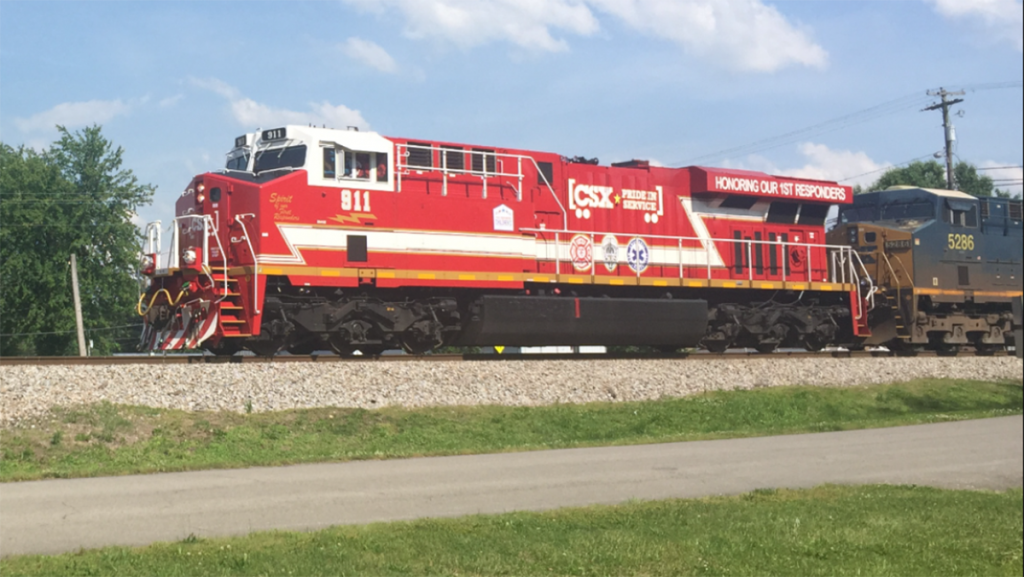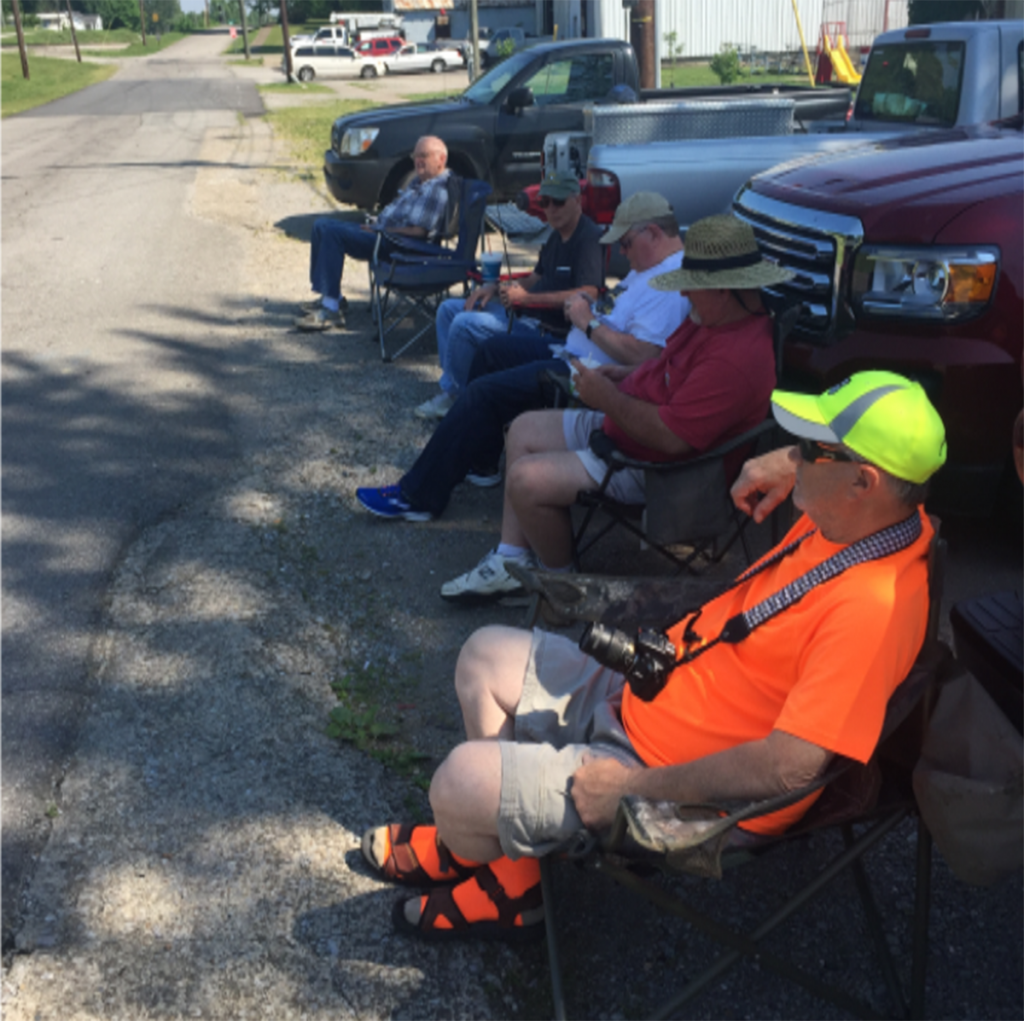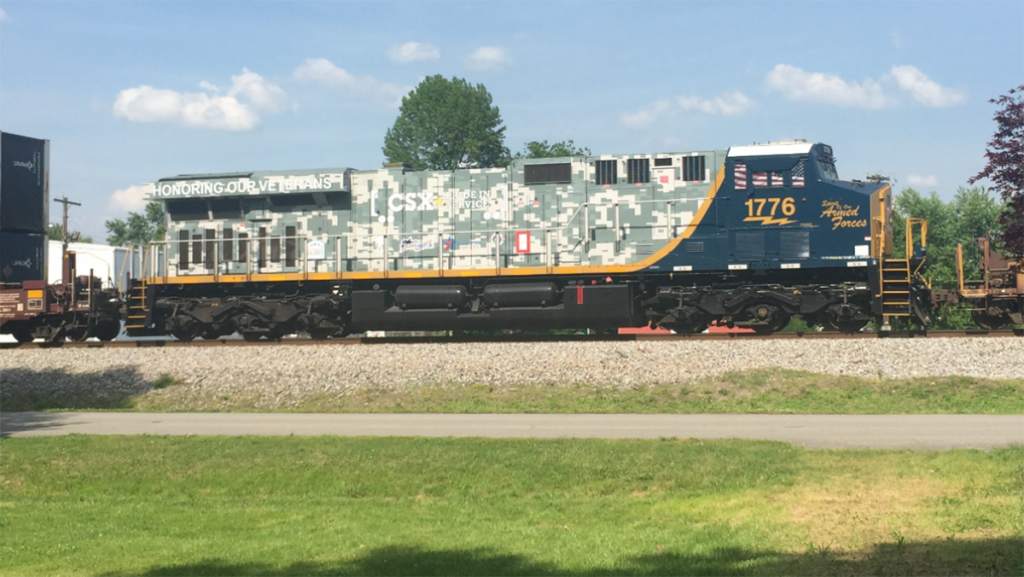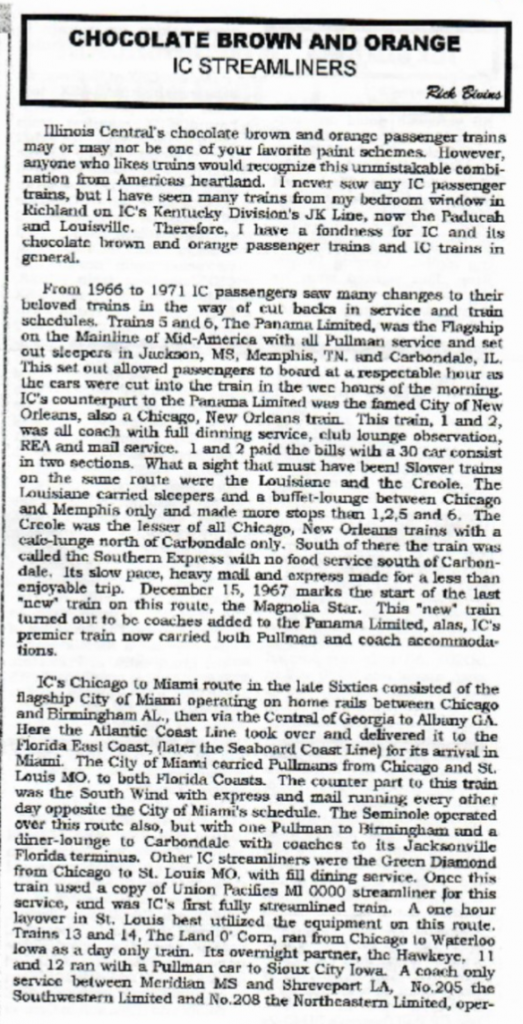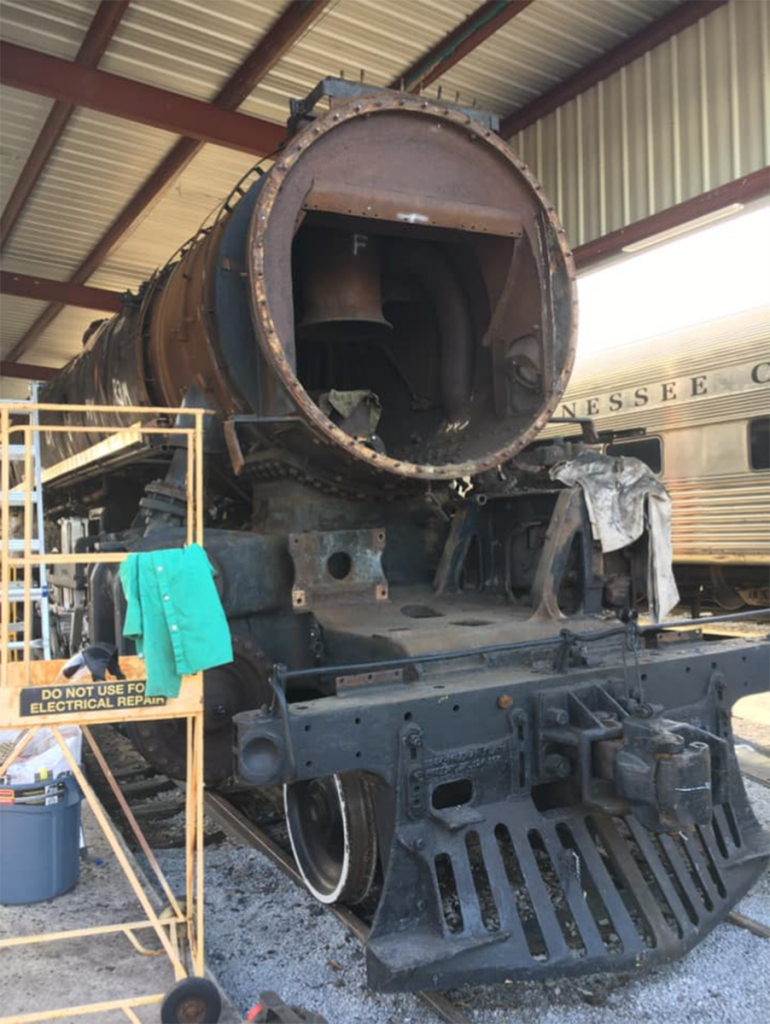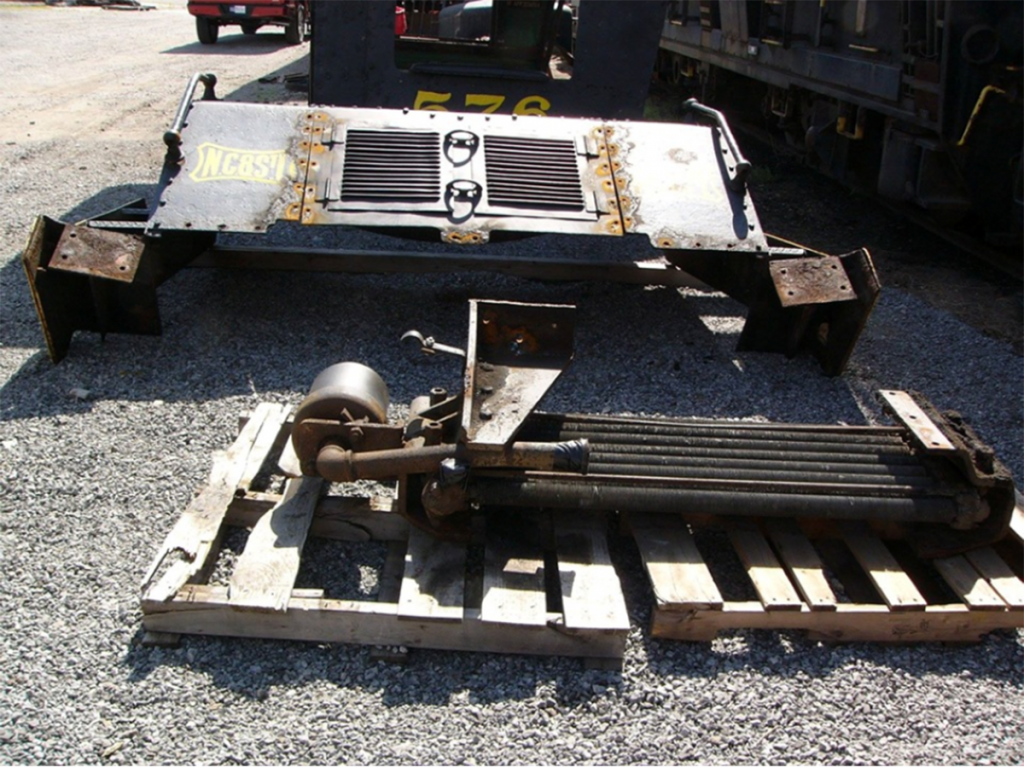On July 27, 2019, Rick Bivins hooked up with Matt Gentry at his home in Champaign IL for a day of railfanning. The following pics are from that trip. First stop was the old CB&Q line from Chicago to Galesburg via the quad cities.
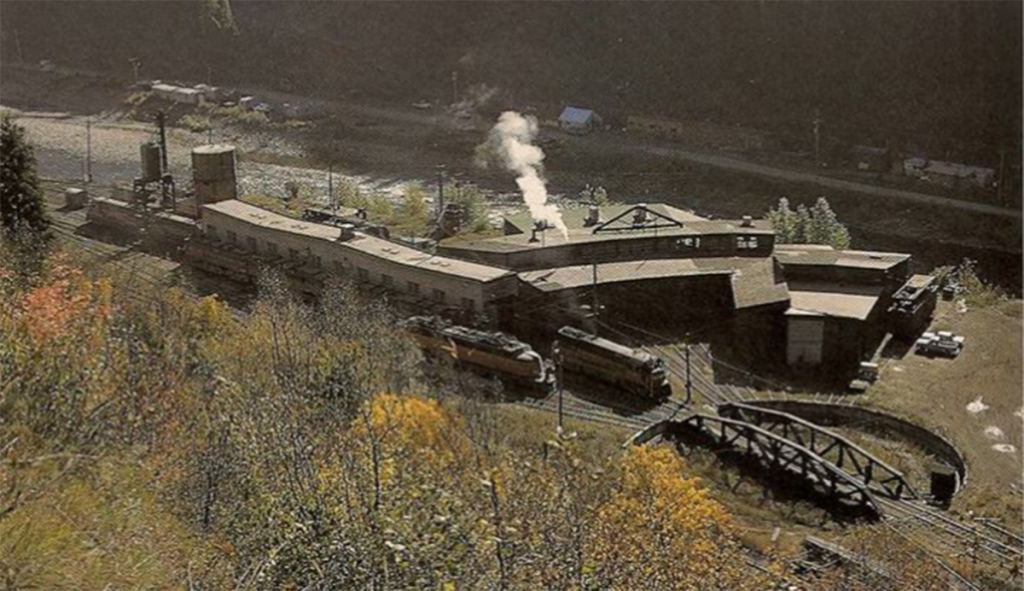
Most railroad roundhouses were round, thus the name, duh!. However, here in Avery, Idaho we have a unique design dictated by geography. The narrow valley, with the robust St Joe River immediately behind, made for this unusual building. Avery was where helper engines were added to assist trains over St Paul Pass, crossing the Bitterroot Mountains into Western Montana. A two-mile tunnel was dug under the summit. The history of that event is recorded in the book: Doctors, Dogs and Dynamite. A good read.
Avery became a key terminal for the Milwaukee Road with crew and engine changes. 440 miles of electrified operations from central Montana ended here. Westward trains switched to steam, and more recently diesel locomotives. The line from Othello in Central Washington to Tacoma and Seattle was also electrified. Monday morning QBs say the 216 mile gap was one of the downfalls for the Milwaukee. Either way, for 71 years the Milwaukee Road provided “spirited” competition to the NP, GN and UP.
The Milwaukee was the last kid on the block, in its westward venture, necessitating two important facets. First, the railroad had fewer choices in selecting routes, particularly through mountainous areas; and second, they rose to that challenge by constructing the most direct, and subsequently the fastest route from Chicago to Tacoma. In their heyday, the Milwaukee Road ran freight trains from the windy city to the coast in 55 hours. Amtrak could only wish.
Credits: Photo by Bruce Black as seen in Frederick W. Hyde’s book: The Milwaukee Road – Gary Ostlund
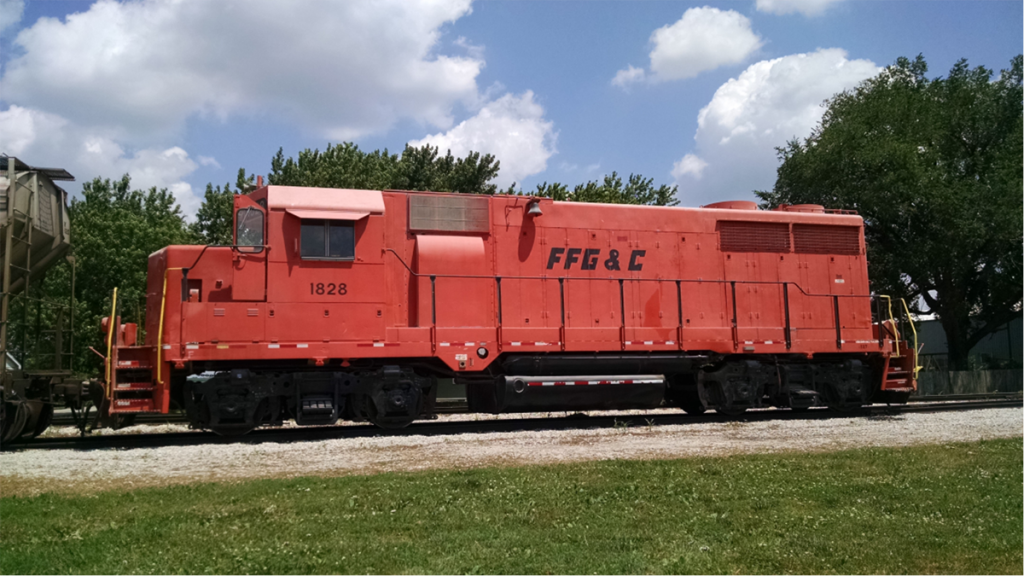
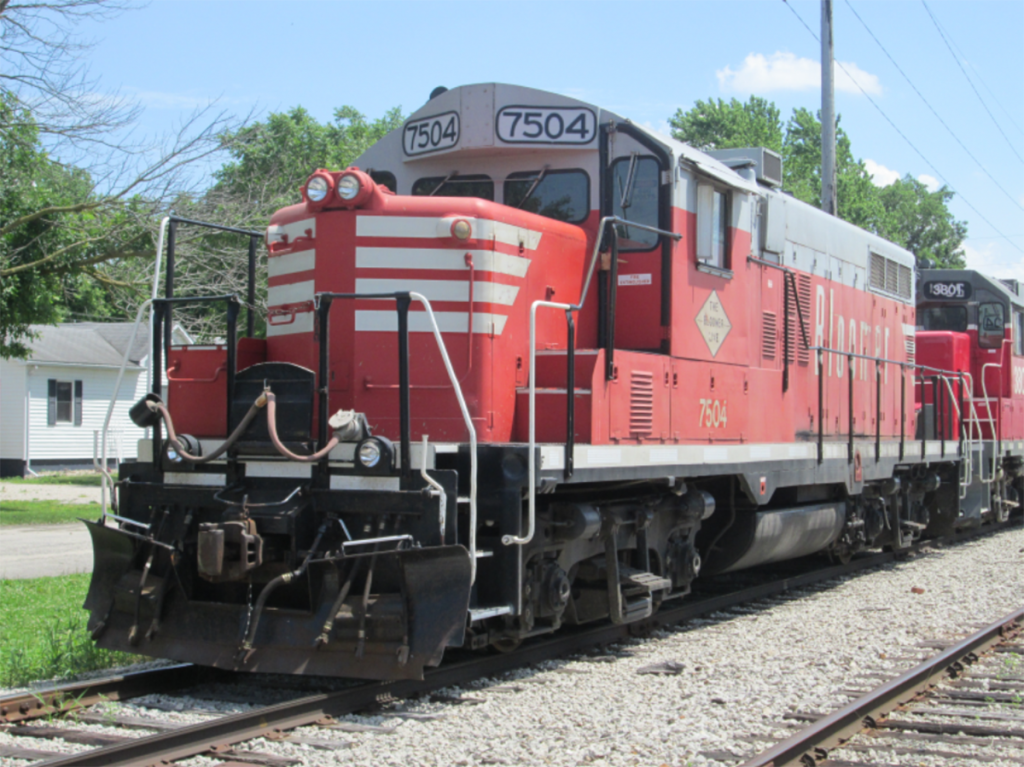
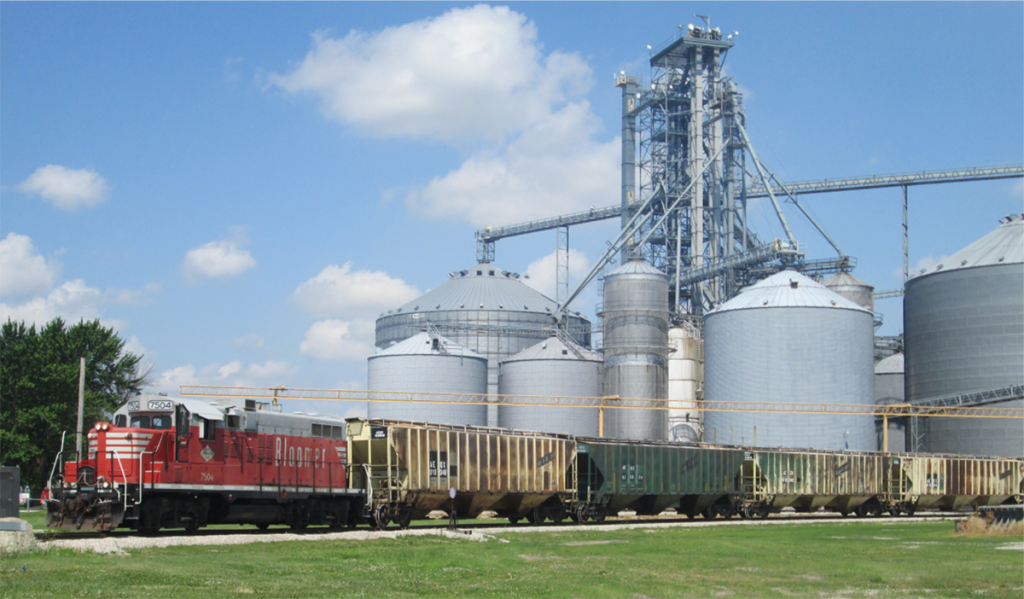
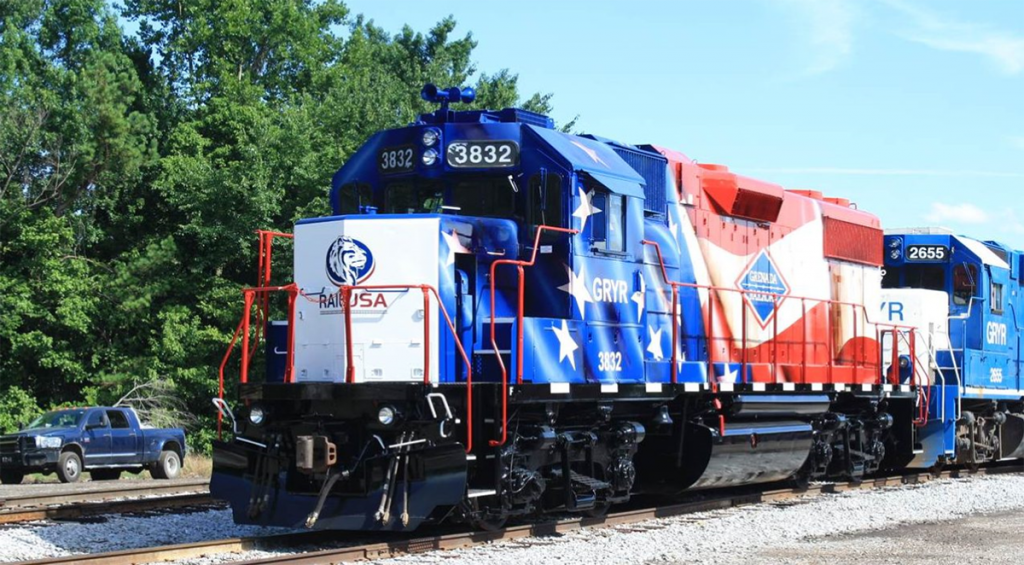
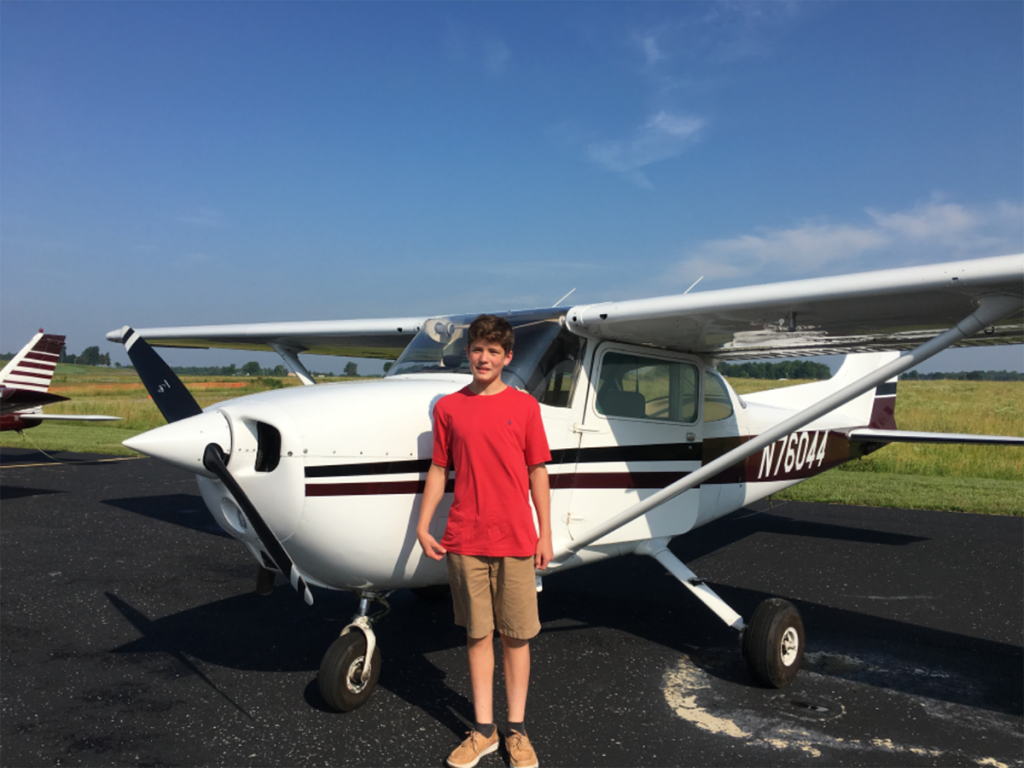
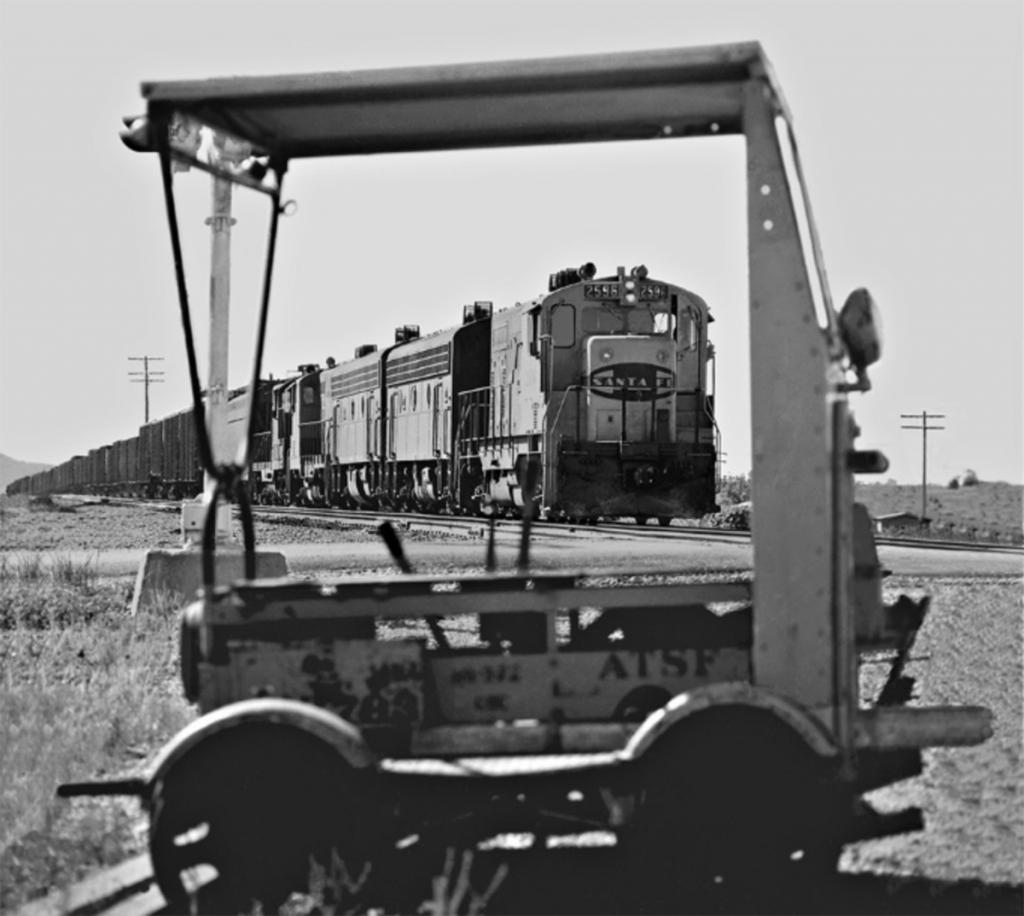
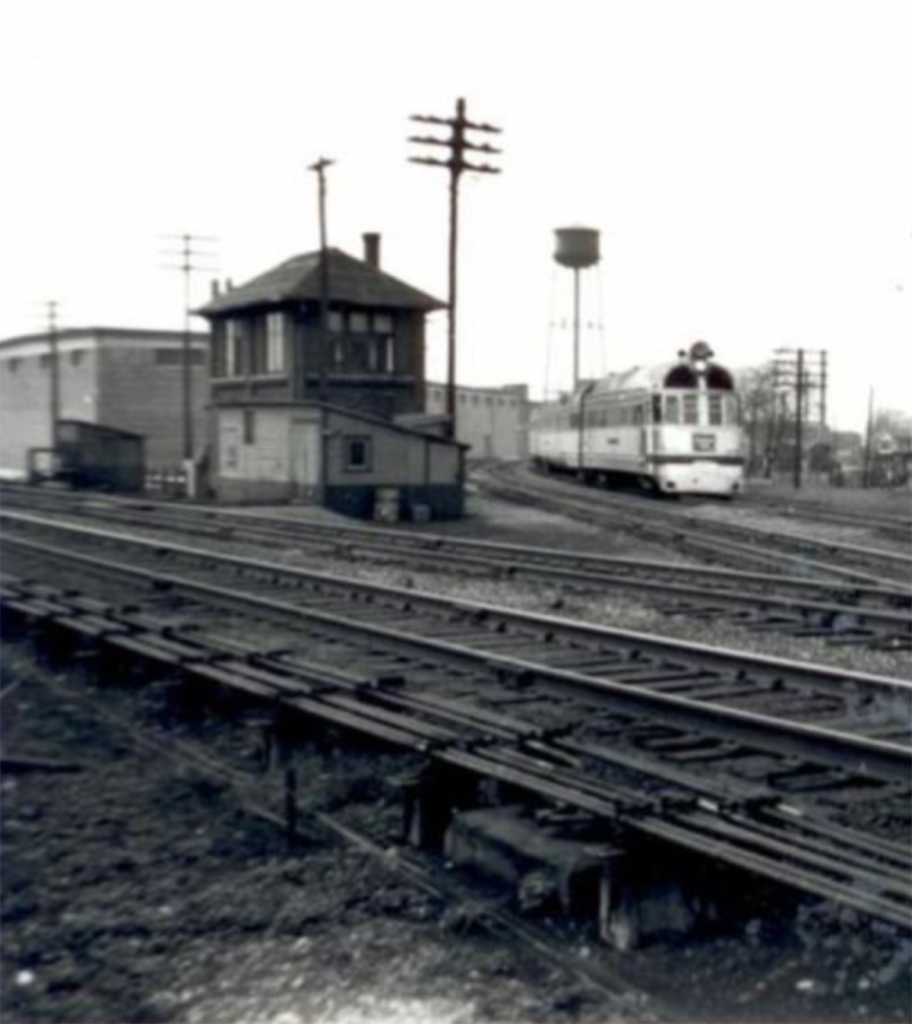
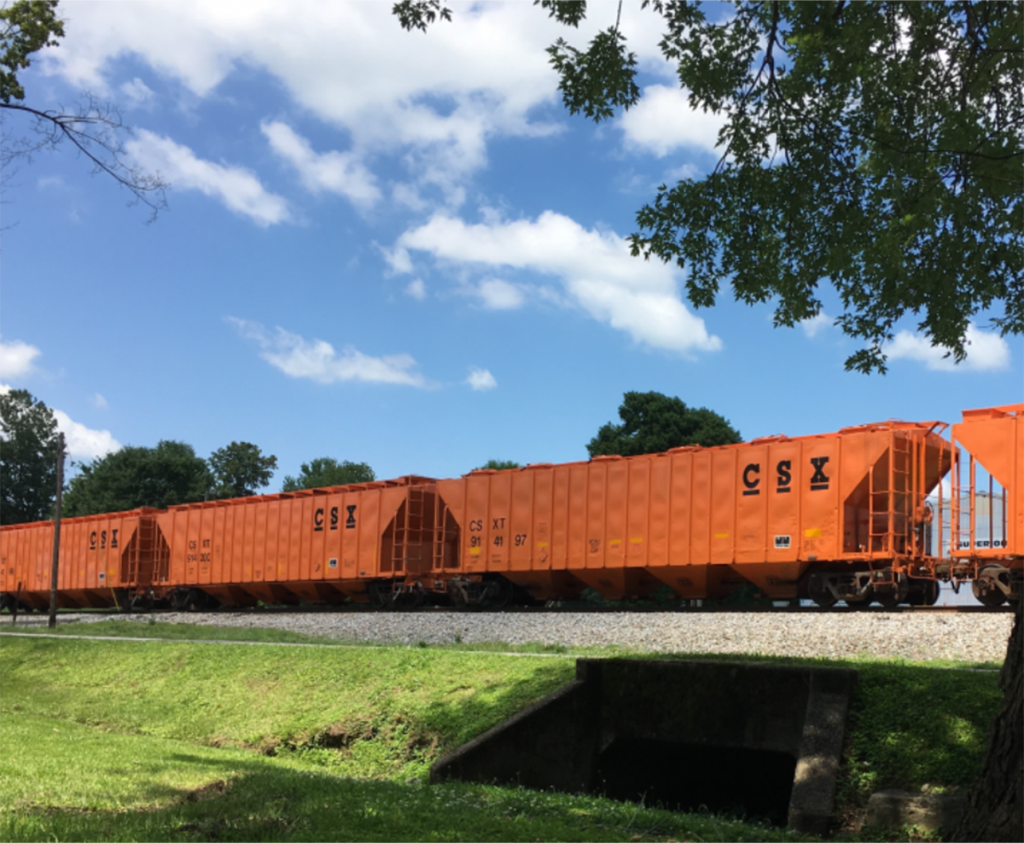
These photos of NC&StL 576 are taken from Nashville Steam’s Facebook page. See Nashville Steam on Facebook for credits. 576 sits beneath the shed at the Tennessee Central Museum (Nashville).
In late June, the super heaters were removed from 576. Each unit has 4 sets of curved parallel pipes that send steam back into the tubes re-using the heat from the boiler to convert the saturated steam into dry steam. The longer pipes in the front are for the super heaters along the bottom. The units in the middle and the top are tucked behind the front row. (taken from Nashville Steam Facebook page)
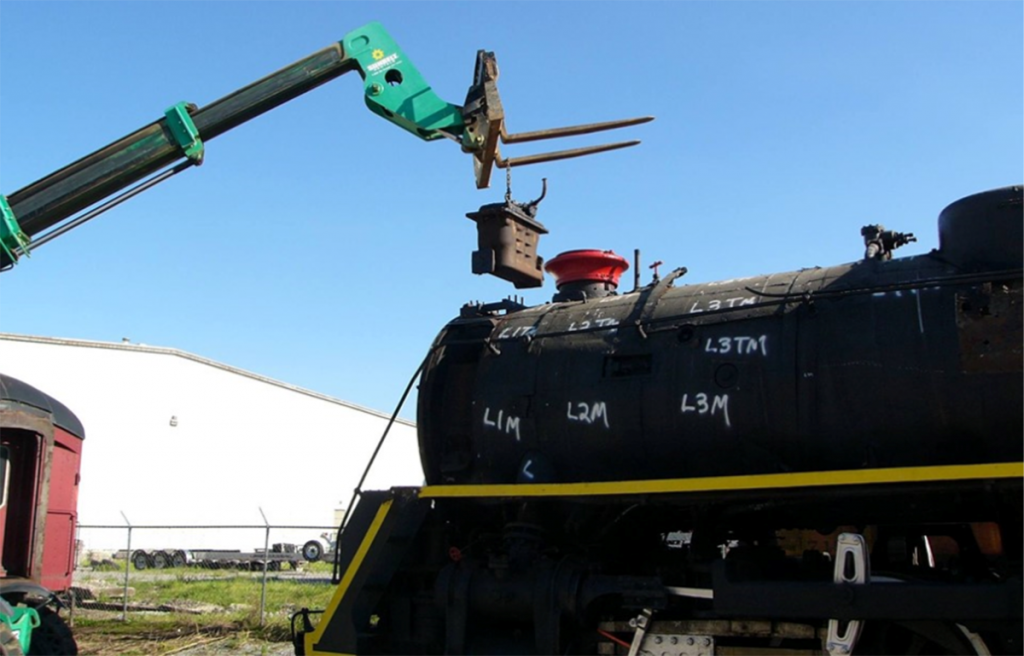
After reaching their goals, and becoming profitable, the western railroads soon made major improvements to their infrastructure. On the western slopes of Snoqualmie Pass the Milwaukee Road crossed six water courses. The forests provided ample supplies of heavy timber and wooden trestles such as we see here were the result.
Wooden trestles required a lot of maintenance, and were subject to forest fires. Some were filled like Humpback Creek. The planking shields the structure from damage when dumping fill. A hefty culvert allows passage of the creek to this day. The other five wooden trestles were replaced by steel structures, assembled within the confines of the wooden trestles. Traffic was only minimally disrupted. Somewhere in my “stuff” I have a picture of that work in progress that I will share, someday.
Many years later the westbound Olympian Hiawatha is seen at the same location, about to enter a snow shed, also made out of 12 x 12 timbers. The locomotive, (a motor in railroad lingo) is one of 5 Bi-polars built by General Electric. They were unique in that the axles were the armature, no gears. Other than the clickety-clack of jointed-rail, they were extremely quiet. While traversing the warehouse district of Seattle, with many street crossings, the engineers were required to keep the bell clanging in addition to using the whistle.
Credits: Wooden trestle: Unk; westbound Olympian: Milwaukee Road photo
We had a total of ten entries for the May 2019 chapter photo contest and all of them were really tough to judge, but I finally narrowed it down to 4 winners.
Blair Terry took first place with a nice pan shot of UP 4014 and 844! Our second place winner was his grandpa, Bill Farrell with Big Boy 4014 underway at Medicine Bow, Wy.
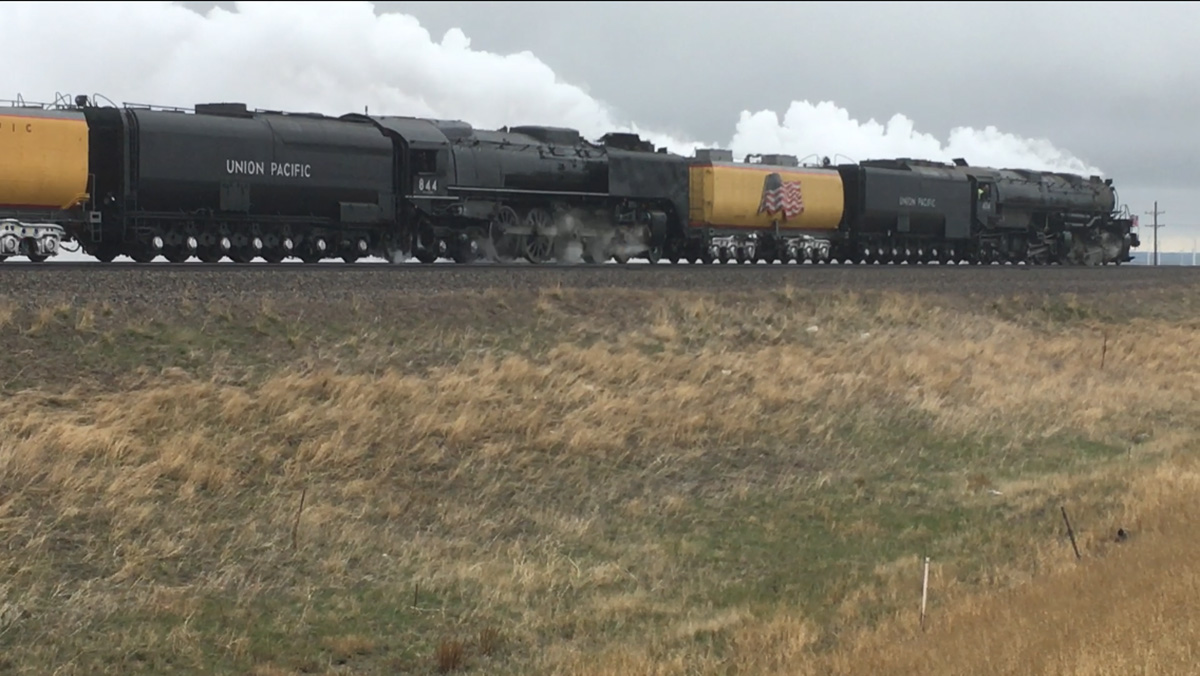
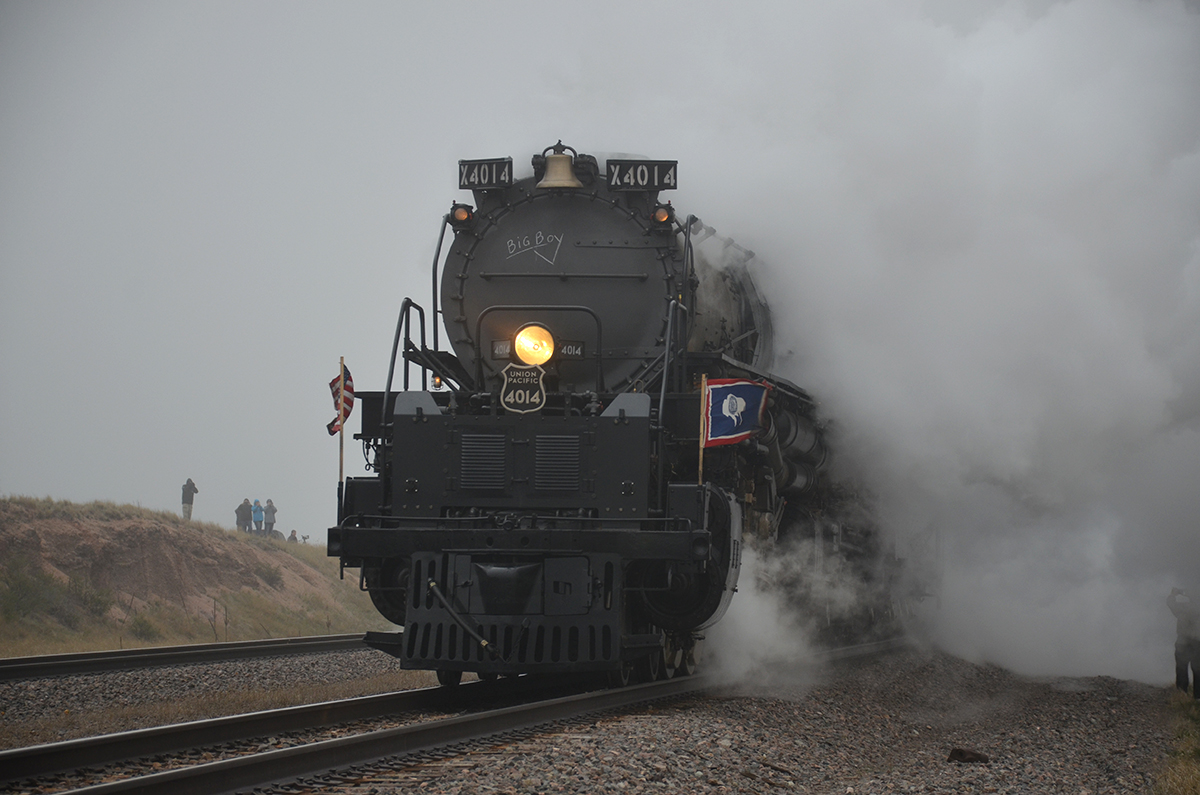
Third place winner was Bill Grady with a overhead view of CSX Q532 at Johnsonville, TN and Honorable mention went to Cooper Smith for his dramatic photograph of a Paducah and Louisville Coal train pulling hard as it passes through Princeton, Ky.
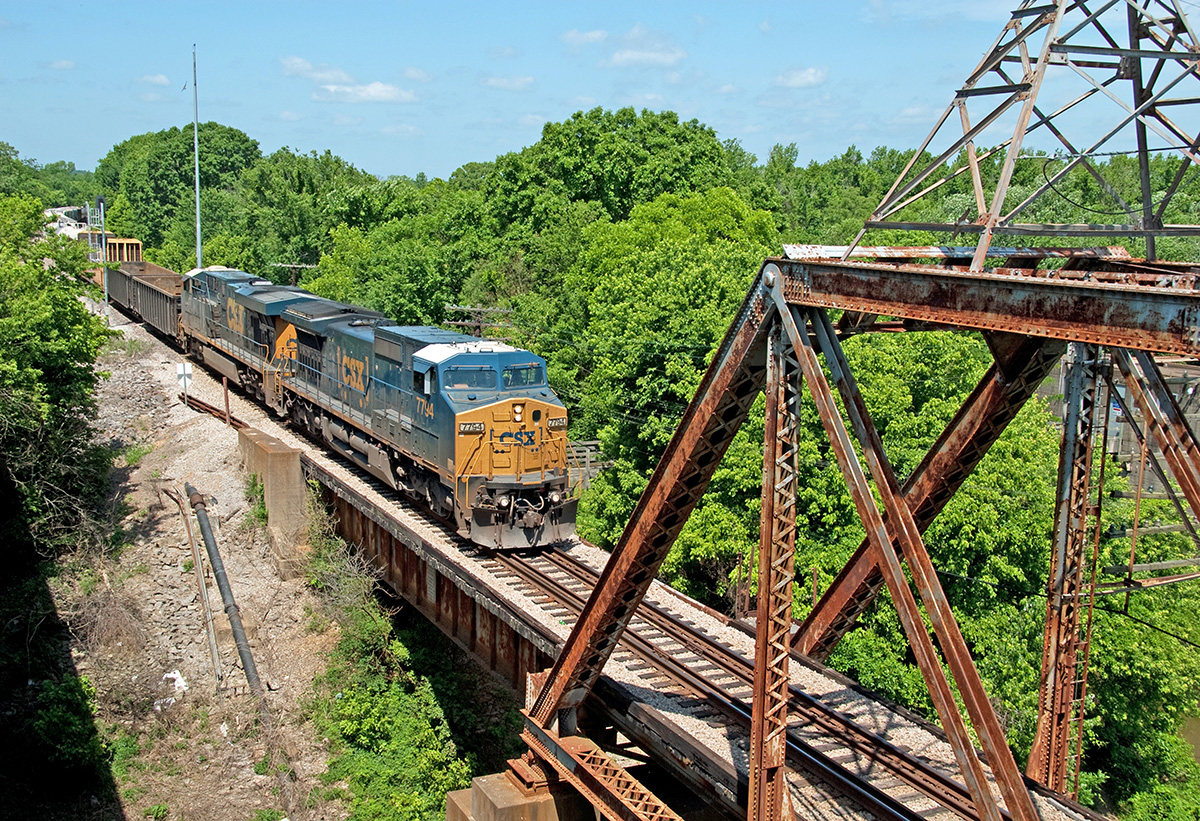
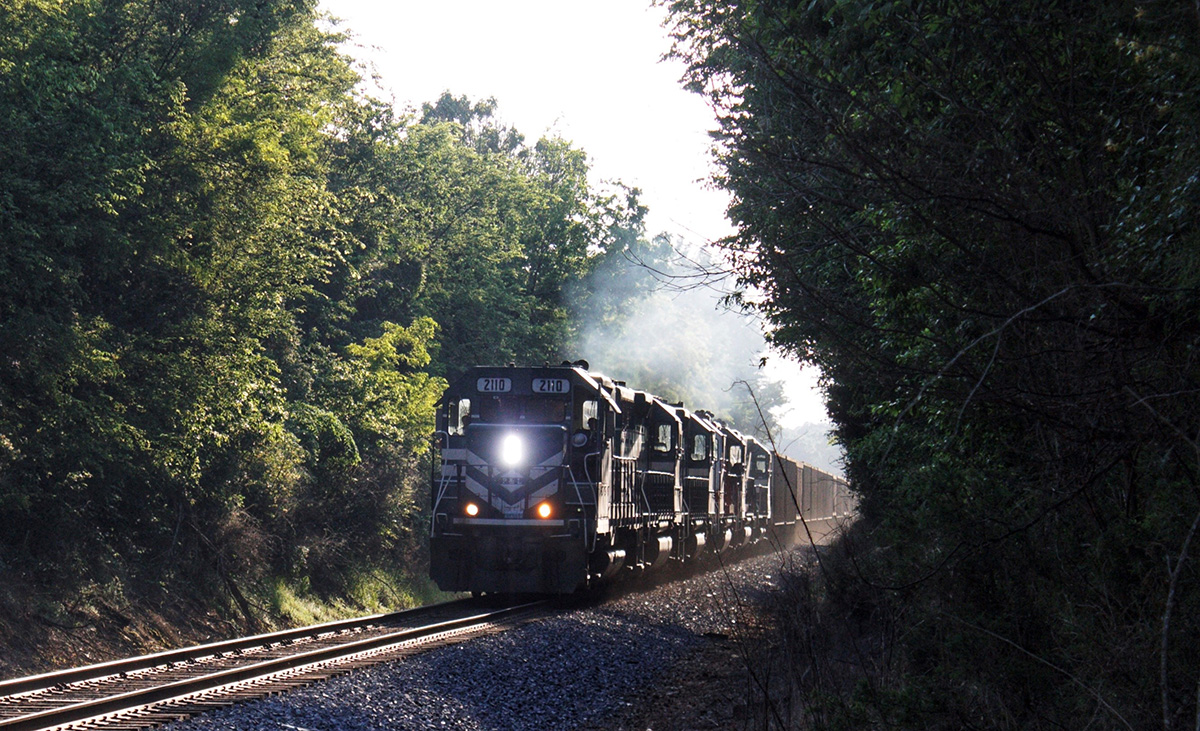
Our next contest will run from July 15-31st and the deadline for entries will be August 7th, 2019. Send your entries to me (no more than 2 per paid chapter member) at webmaster@westkentuckynrhs.org or jim@jimpearsonphotography.com by midnight on August 7th!
Earlier this month, May 10th, marked the 150th Anniversary of the Gold Spike ceremony at Promontory, Utah. I thought it appropriate to rerun this picture story from a few years ago.


The “Thank God it’s Friday” graphic is one of several intro’s for my slide shows to groups. It’s good for a laugh, however, the 1869 meeting of the Union Pacific and the Central Pacific in Utah was somewhat similar. Rather than joining in such a slip-shod manner, they simply passed one another, and kept on going. Seems the two railroads were being reimbursed by the Government for work performed, by the mile. The joining of the rails at Promontory, about three miles around the bend in the picture, was the result of a negotiated settlement.
In the picture, you can easily see the railroad right-of-way on a fill. That is the work of the Central Pacific, charging eastward into the picture. But look closely to the left half of the picture. You can see two earthen bridgeheads with a gap in between. The distant one is easy to see, the other is in the foreground, lower left of the pix. The Union Pacific, working westward, filled the gap with a trestle, long since lost to the elements, salvage, or fire….. not sure.
If you go to Google Earth, you can see both landmarks by tracing the twin right’s-of-ways of both railroads eastward from the Gold Spike Monument site. In a little over three rail miles, or 2.8 the way the crow flies you will see clearly the filled curve, the bridgehead a little less obvious. (Hint: use the ruler in the tool bar, to gauge the distance.)
Credits: (Artwork, unk., can anyone out there ID the artist.?) Photo by Drake Hokanson as seen in TRAINS Mag June 2015
By Bill Thomas
In April 2005, Liam (age 5) is helping me set boundary stones.
I was fortunate to have Ron Johnson as a friend and neighbor. He freely loaned me his Kubota front-end loader to move dirt to the railroad area. I was careful to keep dirt away from the base of my big hickory tree. The depressed area around the tree is now covered with Vinca vines.
It’s been my pleasure over our 16 years here in Madisonville to share my backyard with friends, family, neighbors, and many others. – Bill

Submitted by Gary Ostlund

A few weeks ago, my picture story on the New York Central’s “Water Level Route” included the use of track pans and scooping water, and raised several questions. .
There were 19 track pans between New York City and Chicago, and ten between Buffalo and Chicago on their line through Ontario and Michigan. Other U.S. railroads using track pans were: the Pennsylvania, Jersey Central, Reading, Baltimore & Ohio, the New Haven and the Milwaukee Road. In the UK, the London & Northeastern scooped water as early as 1859. The American RR Journal labeled these devices: “Jerk Water.” The term is still in use today such as in Jerkwater Town, describing a hamlet too small to merit train stops. At one time water scooping was considered for cattle cars. By law, cattle were required to be offloaded for feed and water after 36 hours. The logistics must have doomed that concept. In the days, before air-conditioning, passengers in cars near the front of the train were wary of opening the windows.
The (New York) Central performed extensive testing finding that above 35 MPH speed had little effect on the amount of water delivered to the tender. Efficiency, the percentage of water from the track pan delivered to the tender, fell off very little between 45 and 55 MPH. However above 55 MPH efficiency dropped rapidly as the scoop sprayed water from under the tender. The recommended maximum speed was set at 50 MPH. Conductors (who are in charge of the train) and Engineers clearly paid little heed to wasted water. Schedules and timetables ruled and management looked the other way.
A special thanks to former New York Central motive-power dispatcher Jim Ferrante for technical data.
Submitted by Gary Ostlund

As railroads grew, trains got longer and heavier, the power to pull them got larger. Roundhouses with the ubiquitous turntable suddenly needed updating.
Roundhouses stalls were extended, and turntables had to be lengthened. The individual stall extensions were minor, compared to the lengthening of a turntable.
Speedy construction was essential as you can see with multiple cranes, equipment, supplies and a hefty workforce.

When a turntable was out of service for even a short period, the task of maintaining the motive power came to a standstill. Time was of essence.
The last new roundhouse complex to be built by a major railroad was the Nickel Plate facility in Calumet, IL., near Chicago in 1951. Most roundhouses are a thing of the past, as diesel maintenance required long bays, with pits and overhead cranes. Yet today you will still find many a turntable to turn and position power and certain pieces of rolling stock.
You will notice when a train passes with multiple units up front, the rearmost is almost always facing rearward. Locomotive sets usually return to their terminal of origin, thus no turning of equipment.
So one must wonder, are those remaining turntables symbolically poking their finger into the eye of management as revenge for the demise of steam….?




These photos of NC&StL 576 are taken from Nashville Steam’s Facebook page. See Nashville Steam on Facebook for credits. 576 sits beneath the shed at the Tennessee Central Museum (Nashville).
Work continues to disassemble No. 576 and prepare the locomotive’s appliances for repairs and servicing. One of the biggest tasks was to remove the front end of the smoke box for access to the boiler’s interior. Now we have a better approach to the superheaters and eventually the tubes and flues. Lots of progress!
(taken from Nashville Steam Facebook page)

